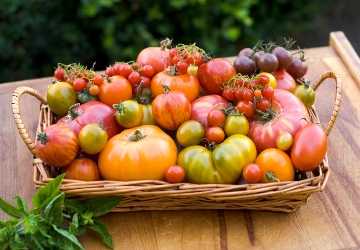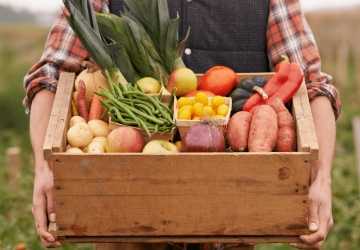Heirloom vegetables, once an integral component of antiquated horticultural practices, are experiencing a renaissance in contemporary gastronomic arenas. Increasingly, individuals are electing to cultivate and prepare these venerable varietals, acknowledging their myriad advantages over modern produce. This discourse explores the underlying causes behind the popularity of heirloom vegetables, elucidating their singular attributes, cultural pertinence, and culinary merits.
The Unique Appeal of Heirloom Vegetables
What Are Heirloom Vegetables?
Heirloom vegetables are botanical varietals meticulously conserved and propagated through successive generations, typically for a minimum of half a century. They are open-pollinated, relying on natural pollination mechanisms such as anemophily, entomophily, or ornithophily. In contrast to hybrid or genetically modified vegetables, heirlooms maintain their genetic heterogeneity, which contributes to their unique flavors, chromatic diversity, and morphological peculiarities.

The Culinary Benefits of Heirloom Vegetables
One primary rationale for the burgeoning popularity of heirloom vegetables is their unparalleled gustatory appeal. Numerous culinarians and home cooks revere the rich, intricate flavors inherent in heirloom varietals. Cooking with heirloom vegetables facilitates a more variegated and flavorful culinary experience. Key culinary benefits include:
- Gustatory superiority: Heirloom veggie recipes frequently exhibit more intense and diverse flavor profiles compared to hybrid varietals.
- Textural uniqueness: These vegetables can present a panoply of textures, from the crispness of heirloom carrots to the creamy consistency of heirloom tomatoes.
- Aesthetic allure: Heirloom vegetables exhibit a spectrum of hues and forms, enhancing the visual appeal of culinary creations.
Nutritional Value
The popularity of heirloom vegetables is efficaciously growing due to their highly nutritive content. They often contain elevated concentrations of vitamins, minerals, and antioxidants relative to their commercial counterparts. This renders cooking with heirloom vegetables a salubrious choice for those endeavoring to augment their diet with nutrient-dense foods.
Cultural and Historical Significance
Preserving Genetic Diversity
The popularity of heirloom vegetables is also impelled by a desire to conserve genetic diversity within our alimentary supply. Contemporary agronomic practices have engendered a diminution in crop variety, with numerous traditional varietals verging on extinction. By cultivating and preparing heirloom vegetables, horticulturists and agronomists contribute to the preservation of the genetic pool, ensuring these plants persist for posterity.
Connecting to the Past
Heirloom vegetables furnish a tangible nexus to our agricultural heritage. Each varietal harbors its own historiography, often intertwined with specific regions, familial lineages, or cultural traditions. Cooking with heirloom vegetables permits us to venerate these histories and sustain a connection to our antecedents.
Growing Heirloom Vegetables
Advantages of Home Gardening
Cultivating heirloom vegetables in your garden can be an immensely gratifying endeavor. Here are some advantages:
- Enhanced flavor: Home-cultivated heirloom vegetables frequently surpass store-bought produce in terms of taste.
- Economical: Cultivating your own vegetables can yield significant monetary savings over time.
- Sustainability: Home gardening diminishes the carbon footprint associated with the transportation of produce.
Tips for Success
To efficaciously grow heirloom vegetables, consider the following strategies:
- Select appropriate varietals: Opt for heirloom vegetables acclimated to your climatic and edaphic conditions.
- Commence with quality seeds: Procure seeds from reputable purveyors to ensure robust germination rates and plant vitality.
- Implement crop rotation: Rotate crops each season to forestall soil depletion and mitigate pest issues.
- Employ organic methods: Eschew synthetic chemicals in favor of organic fertilizers and pest control measures.
Cooking with Heirloom Vegetables
Heirloom Veggie Recipes
Here are some delectable heirloom veggie recipes to experiment with:
- Heirloom Tomato Salad: Amalgamate a variety of heirloom tomatoes with fresh basil, mozzarella, and a drizzle of olive oil for a simple yet flavorful salad.
- Roasted Heirloom Carrots: Toss heirloom carrots with olive oil, salt, and pepper, then roast until tender and caramelized.
- Heirloom Squash Soup: Purée roasted heirloom squash with vegetable broth, garlic, and herbs for a comforting and nutritious soup.
Cooking Techniques
When preparing heirloom vegetables, consider these techniques for the best heirloom veggie recipes to accentuate their unique qualities:
- Roasting: Augments the intrinsic sweetness and profundity of flavor.
- Grilling: Imparts a smoky flavor and charred texture.
- Fresh preparations: Relish heirloom vegetables raw in salads or as garnishes to appreciate their unadulterated taste.
The Future of Heirloom Vegetables
Trends in Sustainable Eating
The escalating popularity of heirloom vegetables is emblematic of a broader trend towards sustainable and conscientious consumption. Consumers are increasingly cognizant of the environmental ramifications of their dietary choices and are seeking alternatives that bolster biodiversity and curtail carbon footprints. Cooking with heirloom vegetables aligns with these principles, proffering a means to savor delectable food while promoting sustainability.
Supporting Local Farmers
Procuring heirloom vegetables from local farmers' markets bolsters small-scale agriculture and perpetuates traditional farming methodologies. By selecting heirloom varietals, consumers can foster a more diversified and resilient food system.
Health Benefits of Heirloom Vegetables
Enhanced Phytochemical Content
The popularity of heirloom vegetables is growing because of their augmented levels of phytochemicals, which are bioactive compounds synthesized by plants as a defense mechanism against environmental stressors. These compounds, including flavonoids and carotenoids, confer significant health benefits, such as:
- Antioxidant properties: Phytochemicals neutralize reactive oxygen species, mitigating oxidative stress and diminishing the risk of chronic pathologies.
- Anti-inflammatory effects: Regular ingestion of heirloom vegetables can attenuate inflammation, potentially ameliorating conditions like arthritis and cardiovascular diseases.
Superior Fiber Content
- Enhanced gastrointestinal motility: Fiber facilitates the efficient transit of food through the digestive tract, preventing constipation and promoting regular defecation.
- Glycemic modulation: Fiber decelerates the absorption of glucose, aiding in the maintenance of stable glycemic levels and mitigating the risk of diabetes mellitus.
- Cardiovascular benefits: A fiber-rich diet can reduce serum cholesterol concentrations, thereby decreasing the risk of atherosclerotic cardiovascular diseases.

Environmental Impact of Growing Heirloom Vegetables
Promoting Biodiversity
- Augments ecosystem resilience: Biodiversity enhances the capacity of ecosystems to recuperate from perturbations, such as pest infestations and diseases.
- Supports pollinators: A diverse array of plant species provides essential habitats and nutritional resources for pollinators, crucial for the propagation of numerous crops.
- Fortifies soil health: The varied root structures and organic detritus from different heirloom plants improve soil architecture and fertility.
Reducing Chemical Dependency
- Diminishing pesticide contamination: Reduced pesticide usage results in cleaner aquatic ecosystems and healthier terrestrial biomes.
- Preventing pedological degradation: Organic farming practices enhance soil vitality, reducing erosion and nutrient depletion.
- Fostering beneficial biota: An environment free from synthetic chemicals supports beneficial insects and microorganisms that naturally regulate pest populations.
Conclusion
The renaissance of heirloom vegetables in kitchens everywhere attests to their enduring allure. From their superior gustatory qualities and nutritive value to their cultural significance and role in conserving genetic diversity, heirloom vegetables proffer numerous benefits. By cultivating, procuring, and preparing heirloom vegetables, we can relish a more enriched culinary experience while supporting sustainable and diverse food systems.
